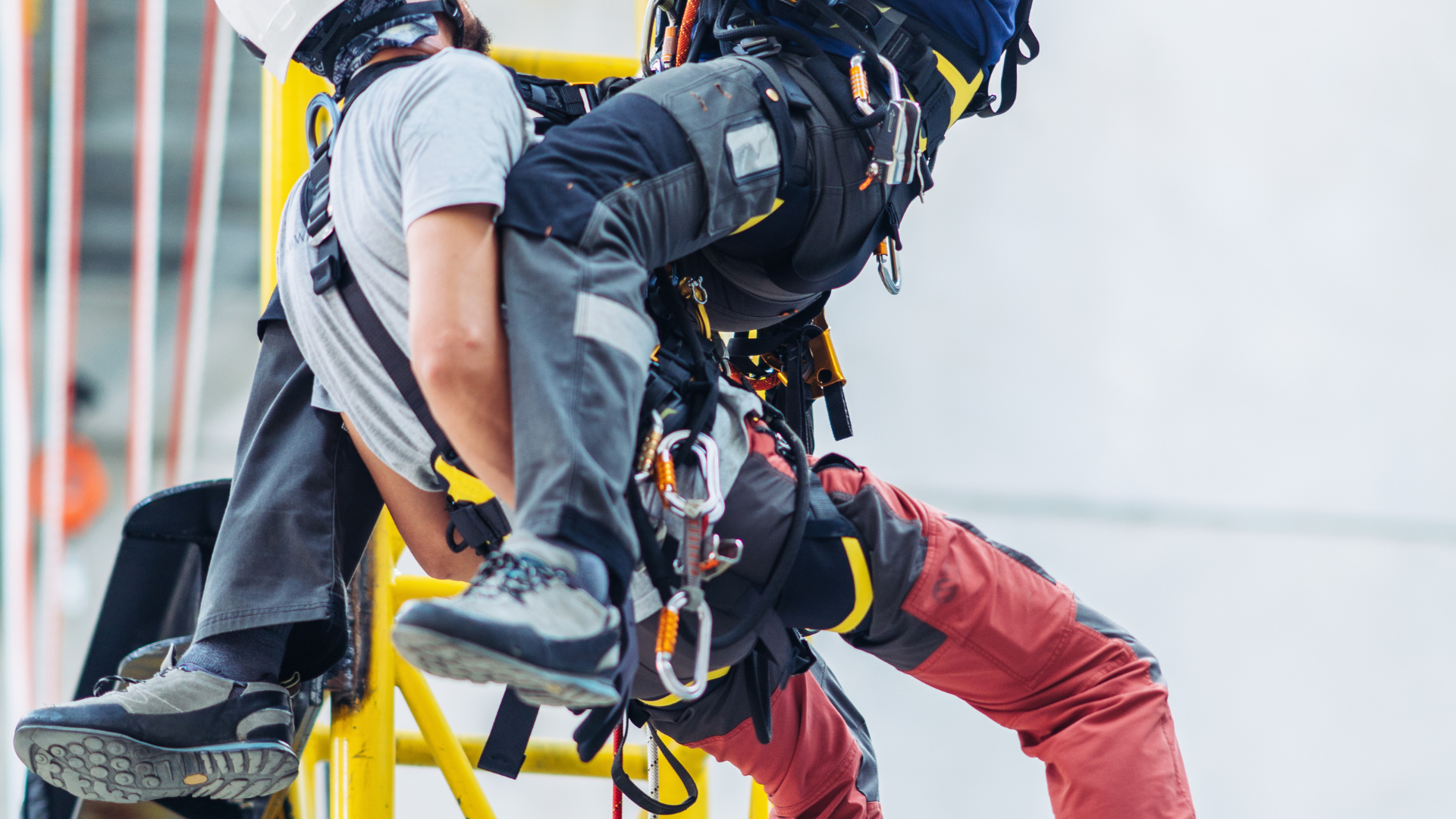One of the most neglected aspects of Fall Protection is the rescue and retrieval plan. You have selected your harnesses and lanyards, debated the feasibility of railings, and calculated your fall distance, but what do you intend to do once the workers have fallen? While the worker is dangling from the structure is not the best time to develop a plan. The time is now before work at heights begins.
Before using a fall arrest system consideration must be given as to what emergency rescue strategy will be employed to remove an affected employee. Depending on the location and height of the work this strategy may be as simple as the availability of a retrievable ladder or as complex as involving the local fire and rescue department’s ladder trucks and elevated equipment. Prior to performing any work activity where personal fall protection equipment will be used, a written rescue plan must be developed by a Competent Person and reviewed with the Authorized employee.
The HSE requires that your rescue plan is properly planned, supervised and carried out by people who are right for the job. You can check if someone is suitable for this role by checking that they have sufficient skills and experience to perform rescue operations. This plan and the resources must be replenished and updated regularly to ensure the best possible equipment is on hand. We have a wide range of rescue kits available for these rescue plans.
When making a working at height rescue plan, HSE also requires you to think about these aspects:
- What will be the anchor point for the safety equipment?
- What type of weather could compromise worker safety?
- Will the rescuers be safe when carrying out the procedure?
- Is the equipment the individual was using no longer safe?
- How will the individual be attached to the rescue kit once they are reached?
- How will they be moved once the rescue team reaches them?
PPE During the Fall
Everyone working at height needs to wear Personal Protective Equipment (PPE) and they need to be trained on how to use it safely as well. The specific PPE that you will use depends on your circumstances and the type of work at height that you do.
Where possible, work in fall restraint rather than fall arrest at all times: done properly, this will significantly reduce the risk of falls by stopping the worker reach dangerous areas in the first place.
However, fall restraint systems are not suitable for all work at height; in this case, fall arrest systems should be used, but extreme care needs to be taken when doing so. No one should ever use fall arrest systems without undergoing rigorous training.
At the same time - instead of hard hats, safety helmets (including a chin strap) are recommended for people who may be at significant risk of a fall.
Rescue Procedure
Decide on a rescue system that will help you retrieve the fallen worker as soon as possible. Will the worker be able to perform a self-rescue or will he need to be assisted?
In dangerous situations, workers should always work in teams: if they work alone, it won’t be possible for a rescue procedure to be carried out on time.
- Preparation is the key. Make sure that there is a rescue kit at the point of work prior to the work commencing. If you fail to do this, there might not be enough time to collect if should someone falls. This will deem your rescue procedure unsuccessful
- When a fall happens, another worker (who has been previously trained in rescue procedures and rescue equipment handling) needs to assess the situation and make contact with the fallen worker, determining his status. In the meantime, the emergency services will need to be contacted and the company alerted about the accident
- The next step is to immediately implement the rescue procedure in accordance with the company policy and safety guidelines
There are 4 types of rescue:
- Lowering a remote casualty
- Raising a remote casualty
- Self-evacuation by descent
- Rescue another in descent
It is preferable that the rescuer does not descend and is not suspended while rescuing someone else so that further complications are avoided. The rescuer should not endanger him when carrying out a rescue procedure.
Rescue Training
Everyone involved in working at height and rescue procedures should be trained on fall protection, rescue equipment and procedures. The authorized rescuer must be trained by a competent rescuer trainer and then retrained should the nature of his work change, or if there are other changes in circumstances. He must also be evaluated by a competent trainer at least once annually.
The rescuer should be able to inspect, anchor, assemble and use fall protection and rescue equipment safely.
Training should include:
- Fall hazard recognition
- Fall hazard control methods
- Fall protection and rescue procedures
- Inspection of equipment and systems before use
All training needs to be well documented; documents need to be archived for a number of years, depending on the situation.
Rescue Equipment
Depending on the type of work that is carried out, as well as the height of the building or site-specific circumstances, you might need to use rescue equipment as simple as a ladder or as complicated as a crane. In some situations, you may have to consider MEPs (Mobile Elevating Platforms), man-riding baskets for cranes or proprietary rescue systems.
Your Rescue Plan Will Need to Include:
- Details of the equipment that you will use for the rescue
- Configuration of the equipment for different types of rescue
- Identification of anchor points where necessary
- Limitations of the rescue plan for adverse weather (wind, snow etc.)
Rescue kits allow you to either lower the person to the ground or lift them up, depending on the situation. As a building owner/employer, you are obliged to provide an anchorage point on the roof to help complete a rescue safely. If someone has fallen over an edge, you need to think of the additional friction encountered when trying to raise the fallen worker, the anchor line being at risk of cutting and generally be aware of the edge interfering with the rescue equipment. In any case, make sure that the equipment that you will use for a rescue is properly serviced before being put to use. Do not use the equipment for purposes other than which it was intended. Whatever happens, make sure that there are other trained individuals on the ground that can assist with the rescue plan.
Emergency Services
Although you should not rely on them to perform the rescue, they will be able to assist, especially in cases of a long-term suspension, which can be very dangerous.
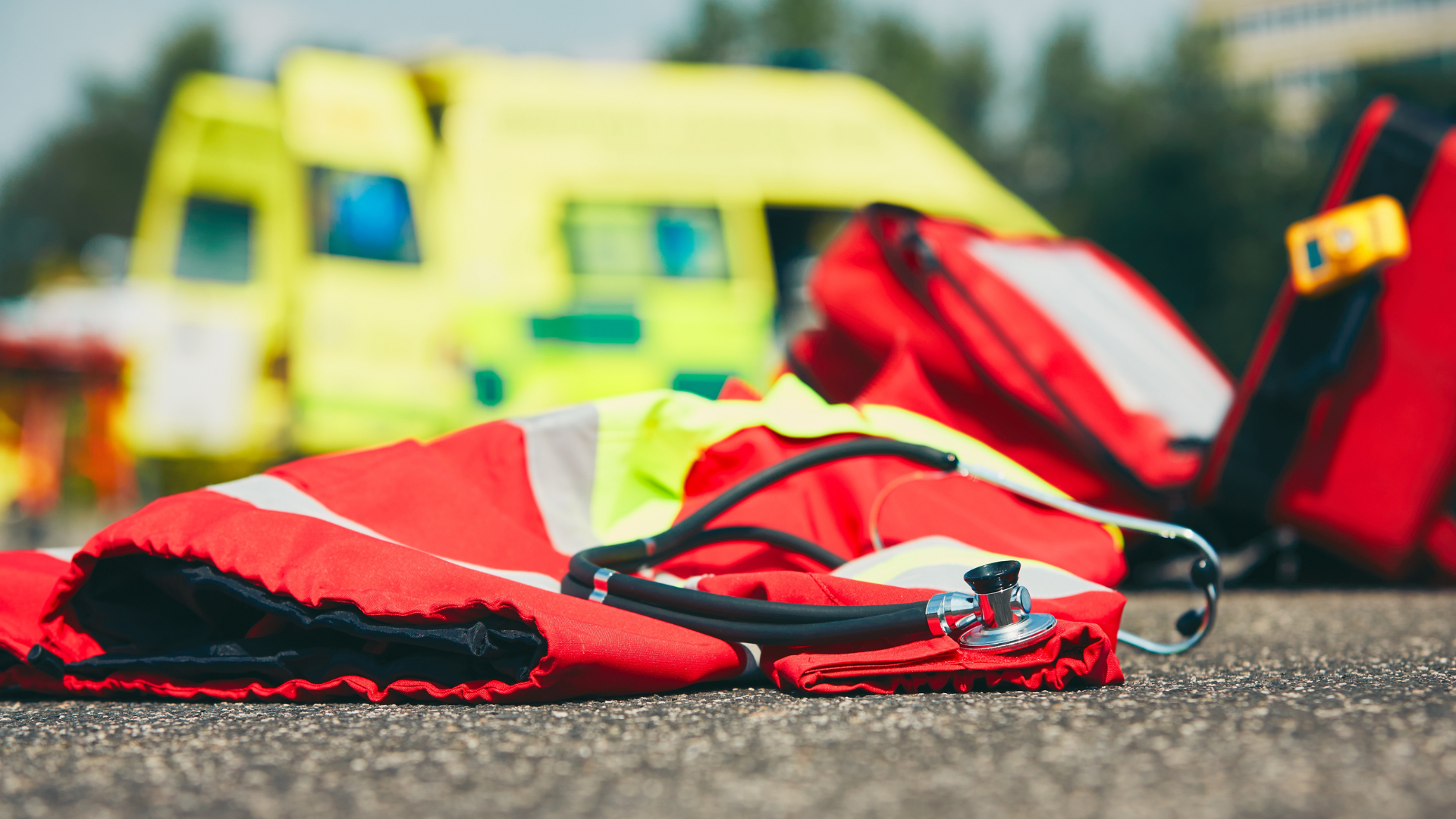
On-site or Other Medical Services
Brief them on the type of accident and potential injuries. The company will report the accident to HSE (Health and Safety Executive), and will then investigate the incident and take appropriate measures.
Prolonged Suspension
Prolonged suspension is a very serious matter and rescuers need to be able to spot the signs of syncope (sudden transient loss of consciousness with spontaneous recovery) as soon as possible.
Rescue Equipment Maintenance
You will need to store the rescue equipment in a suitable place and make sure that it is inspected periodically. You will also need to keep records of previous inspections, maintenance and equipment history.
Rescue equipment should be inspected at least once a year, although we recommend doing this more often.
Whatever plan you come up with needs to happen fast. Suspension trauma can occur in as little as 10-15 minutes and sometimes less, depending on a person's health/the nature of any injuries sustained in the fall. Rescue needs to begin immediately.
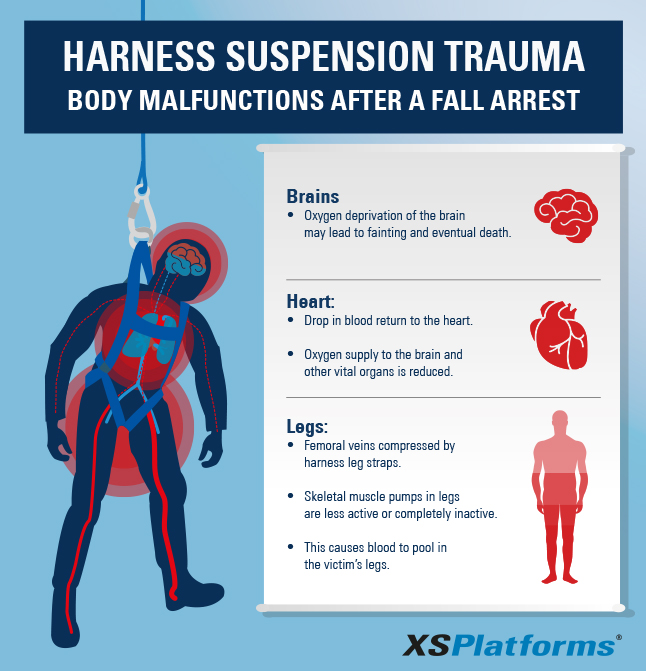
Suspension trauma's symptoms include faintness, breathlessness, sweating, paleness, hot flashes, increased heart rate, nausea, dizziness, low heart rate, low blood pressure, and loss of vision. Factors that can affect the severity include the inability to move the legs, pain, injuries during the fall, fatigue, dehydration, hypothermia, shock, cardiovascular or respiratory disease, and blood loss.
A Rescue Plan is Not One Size Fits All
What works in one instance for fall rescue and retrieval will not necessarily work in the next instance. Rescue from a high-rise, for example, will be much different than rescue from the construction of a one or two-story office building. And, not only will your plan need to be different from project to project, but it will also possibly need to be different from one phase of a job to the next. Perhaps when the steel is up, the sub-grade levels have been completed, and the area around the building has been back-filled and compacted, an aerial lift can be used for rescue, but what do you do while that mass excavation is still open? What if a large concrete pad is being poured right where you need to set up the lift?
Construction is dynamic – the environment is in a constant state of change. Because of this, your plan must be constantly reviewed. In certain general industry settings, you may be able to come up with one plan, insert it into your corporate health and safety program, train to it, and rest reasonably assured that you are covered. Your rescue and retrieval plan must be not only site-specific, but must also be location, phase, and task-specific while considering surrounding work activities.
Your Victim May Not Be Able to Help
Products exist that help prolongs the amount of time before Suspension Trauma sets in. For example, you may have a pack on your harness that can be deployed in the event of a fall which contains straps – or steps – into which you can place your feet to relieve the pressure on your legs. This is an excellent product but it relies on one very critical assumption – that your victim is conscious. Whether the straps are manually deployed or automatically deployed from the force of the fall, the victim will still need to be able to step into them.
Moreover, if you've got people working alone at heights, how do you know they've fallen? Can you see everywhere your workers are working? Is somebody on constant watch to make sure there's nobody hanging from a lanyard? The workers have phones or radios, but you cannot make a radio or phone call if you're unconscious. Nor can you make one if your radio or phone was dislodged in the fall, falling to the ground five stories below. Keep this in mind when developing your plan and, never allow anybody to work at heights by themselves.
Rescue Equipment
Consider your particular circumstances, review available equipment, and devise your plan. Employees must be trained and demonstrate the ability to do what is necessary. If you feel the rescue is beyond your abilities, speak to your local fire department to see if they are trained and if it's feasible for them to be on-site during the work. Obviously, this would most likely not be possible for an entire job, but perhaps it would be for one particularly difficult task. If the local fire department isn't trained, there are private entities capable of rescue at heights.
Hierarchy of Controls
Should you not be able to eliminate every fall hazard, maybe there are ways to eliminate the hazard during certain tasks. Look at the possibility of rails instead of fall arrest. Consider a retractable lanyard instead of a lanyard with a deceleration device or a travel restraint so that your personnel cannot reach the edge. If you can eliminate the fall, you can eliminate the need for rescue and retrieval. If you eliminate the need for rescue, you've eliminated the possibility of suspension trauma.
We are forced to face the realities of this world and those realities are that falls still remain the number one killer in construction and the fatalities are not always caused by the fall itself, but are sometimes caused by the aftershock. Those working at heights need to be prepared and need to act fast so that a would-be rescued worker does not become another statistic.
Here is some rescue equipment to consider when developing the rescue and retrieval plan:
Confined Space Rescue and Retrieval
Confined space equipment allows the worker to be tied off and safely connected when working underground or in difficult-to-access areas. Tripods work well as tie-off points when the worker will not need to be suspended at any point.
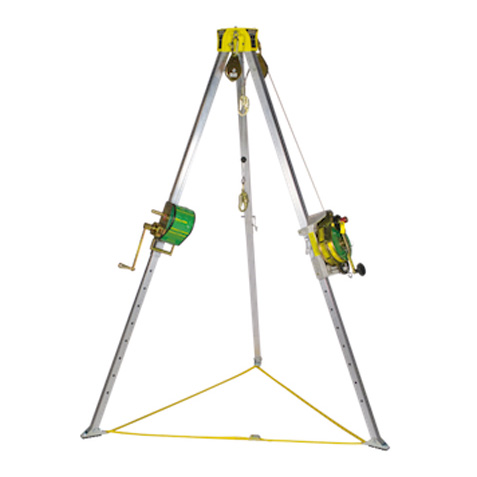
The Workman Tripod is ideal for performing rescue work and helps to make a vertical descent easy. This rescue tripod has an internal leg-locking mechanism; a maximum height indicator on the tripod legs; cut-resistant leg pin retention chains; and recessed product labels. Its reduced weight and integral carrying strap facilitate easy transport.
Fall Arrest Rescue Kit With Gear Rescue Ratchet
This is used in rescues to lift a worker just enough to disconnect his/her fall-arrest system so that he/she can be lowered with the use of the rescue equipment in a kit to a safe place or platform.
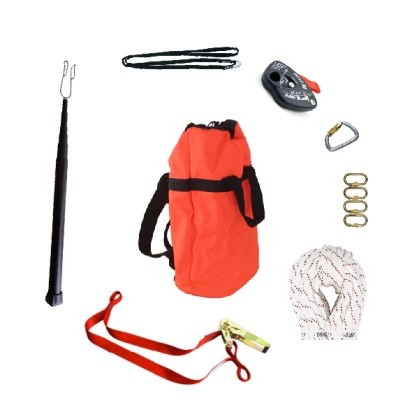
It consists of a:
- Rescue ratchet
- Antipode static rope at the selected length
- 4 x Oval-shaped connectors
- Singing rock eye sling 150cm
- Retractable pole
- 1 x Singing rock HMS auto-locking connector
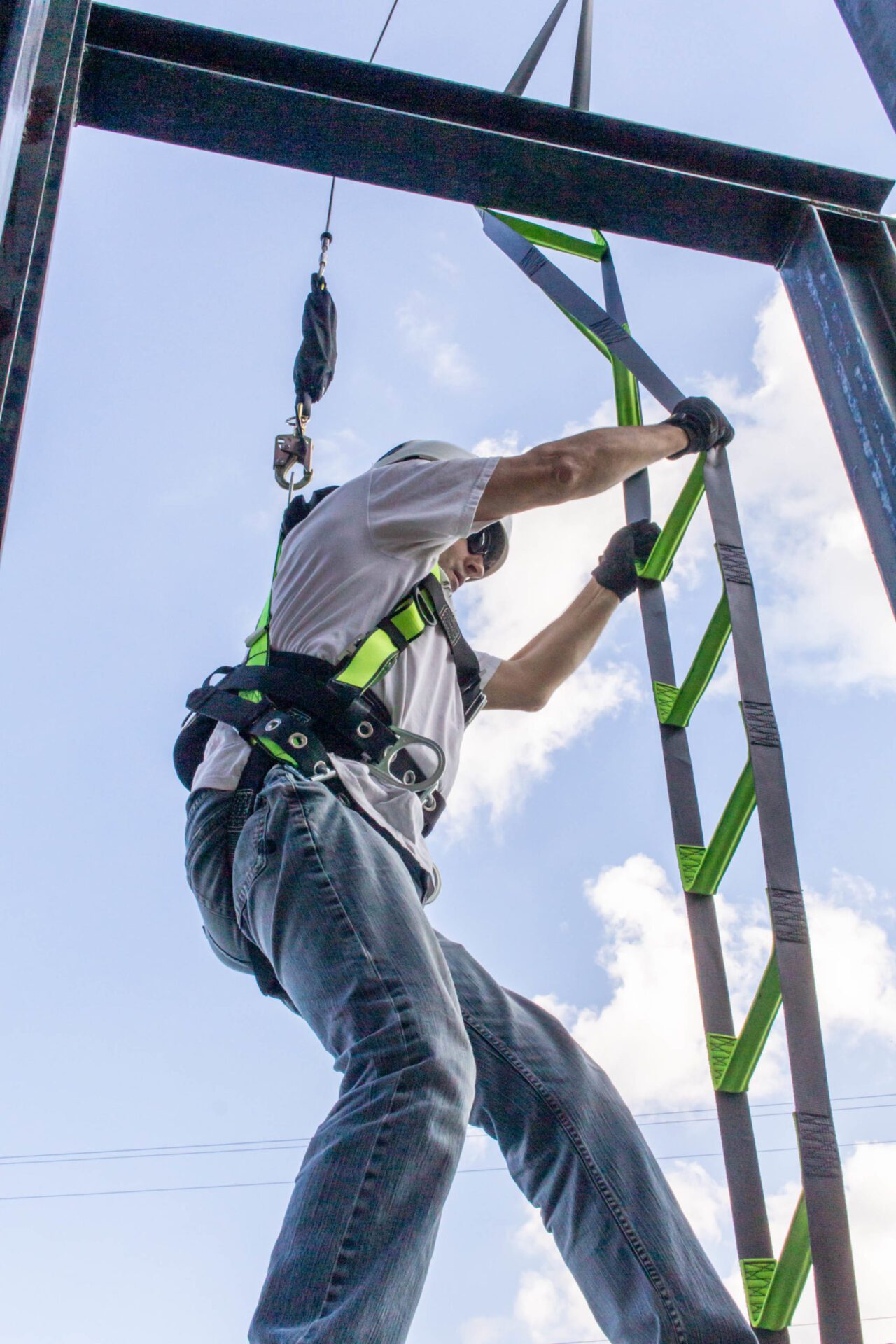
The rescue ladder is specially designed to facilitate the rescue of fallen workers at significant heights and is thus particularly applicable for the wind energy industry. This durable ladder system is manufactured with unique ladder standoffs to make footholds easier and self-rescue more likely. The Rescue Ladder can be deployed within seconds to rescue the victim from falling.
Hauling With Work Rope and Secure Rope
All manoeuvres must be done on two independent rope systems. These two systems can work in parallel (two haul lines) or separately (work rope and secure rope)
All hauling and positioning forces are concentrated on the work rope. The belay rope is set up and kept taut enough to hold the load in the event of anchor or work rope failure.
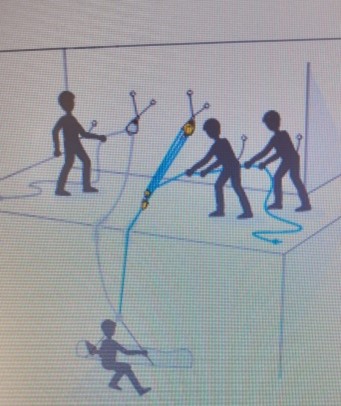
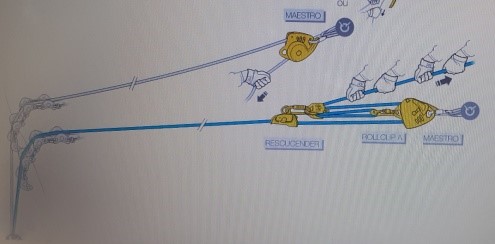
Advantages
Quick and simple setup, only one mechanical-advantage system is needed. Two different systems may be used, for example, a mechanical haul system (winch). Configuration suited to small workspaces.
Disadvantages
If the work rope breaks, the clearance needed can be significant when the secure rope comes under load.
Warning: this system must be fully operational at all times. Risk of the rope path shifting and of unforeseen abrasion on the secure rope as it comes under load following a work rope failure.
Hauling With Twin Tensioned Haul Lines
The two ropes have the same function and work in parallel: each rope supports half the load.

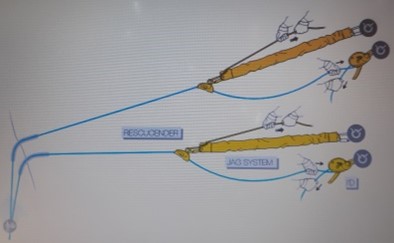
Advantages
With good coordination, it’s possible to haul a heavy load even with simple pulley systems. If one rope breaks, the other is already tensioned to hold the load, reducing the amount of clearance required. It is possible to manage a complex litter route if the rope paths are anticipated.
Disadvantages
Load sharing between the two ropes is never perfect; sometimes one rope holds the entire load; good coordination of team members is required.
Rescues Using Cableways

Cableway Systems Have Been Used in Virtually Every Area of Rope Access and Rescue
When a cableway is tensioned between two anchorages and any kind of load is placed on the system, relatively high forces are placed on the anchors compared to conventional rope rigging. The greater the tension applied to the cableway (i.e. the wider the angle), the heftier the forces. There is a 'magic angle' of 120 degrees on the part of the cableway; here the force applied to the mid-point is equalled by that placed on the anchors; any wider angle of the cableway will begin to create anchorage forces out of all proportion to the humble load exerted at its mid-point.
You have to calculate the forces and create a suitably robust system, tension cableways as little as possible. (With a load-cell in controlled conditions the weight of 2 persons will tend to put about 3.5kN force on the anchors of a conventionally tensioned -1 person on a 3.1 pulley-cableway)
Click here to watch a video about how to rescue a fallen worker.
